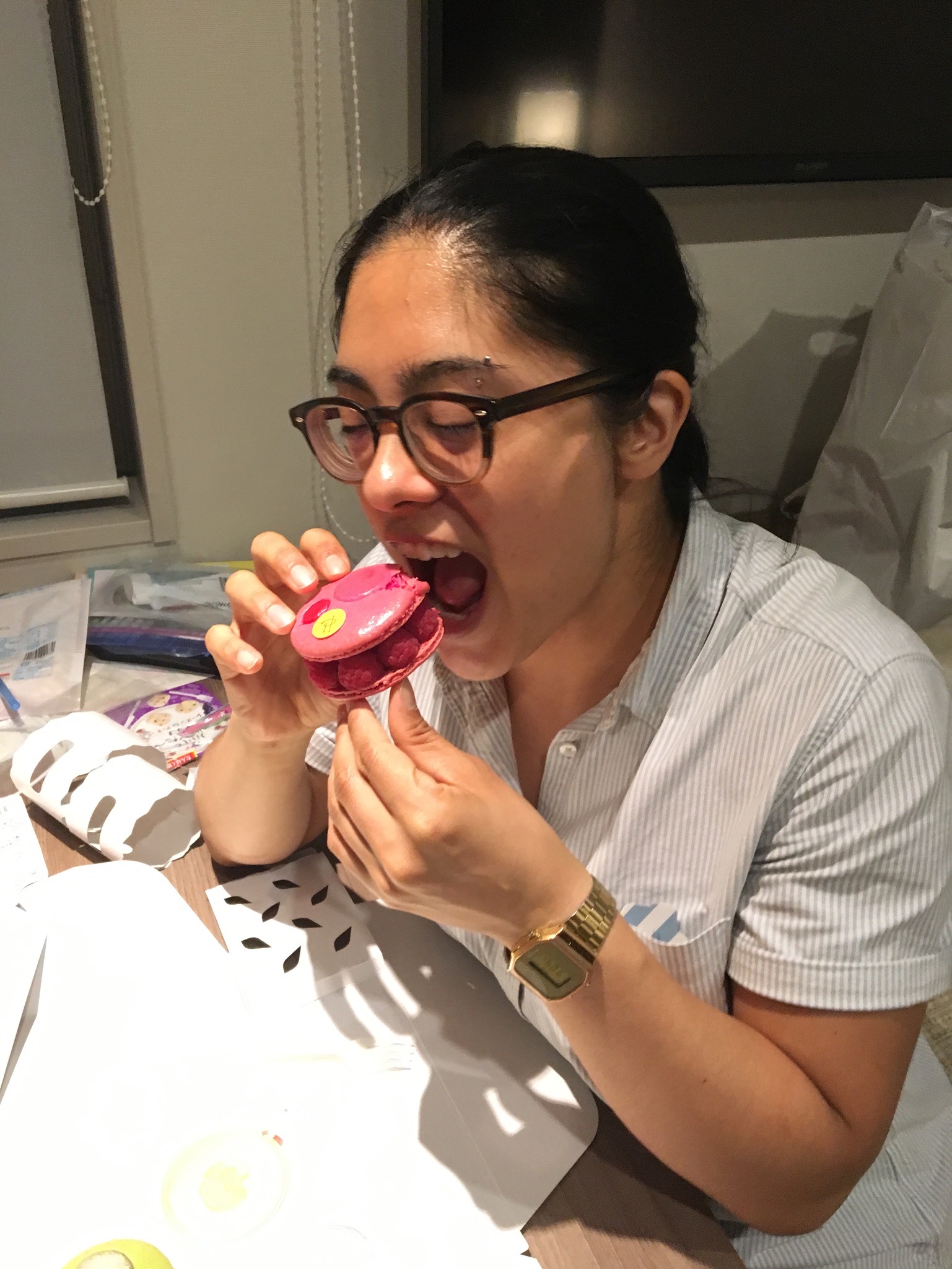Tokyo: Ozu, the 360 year old washi shop
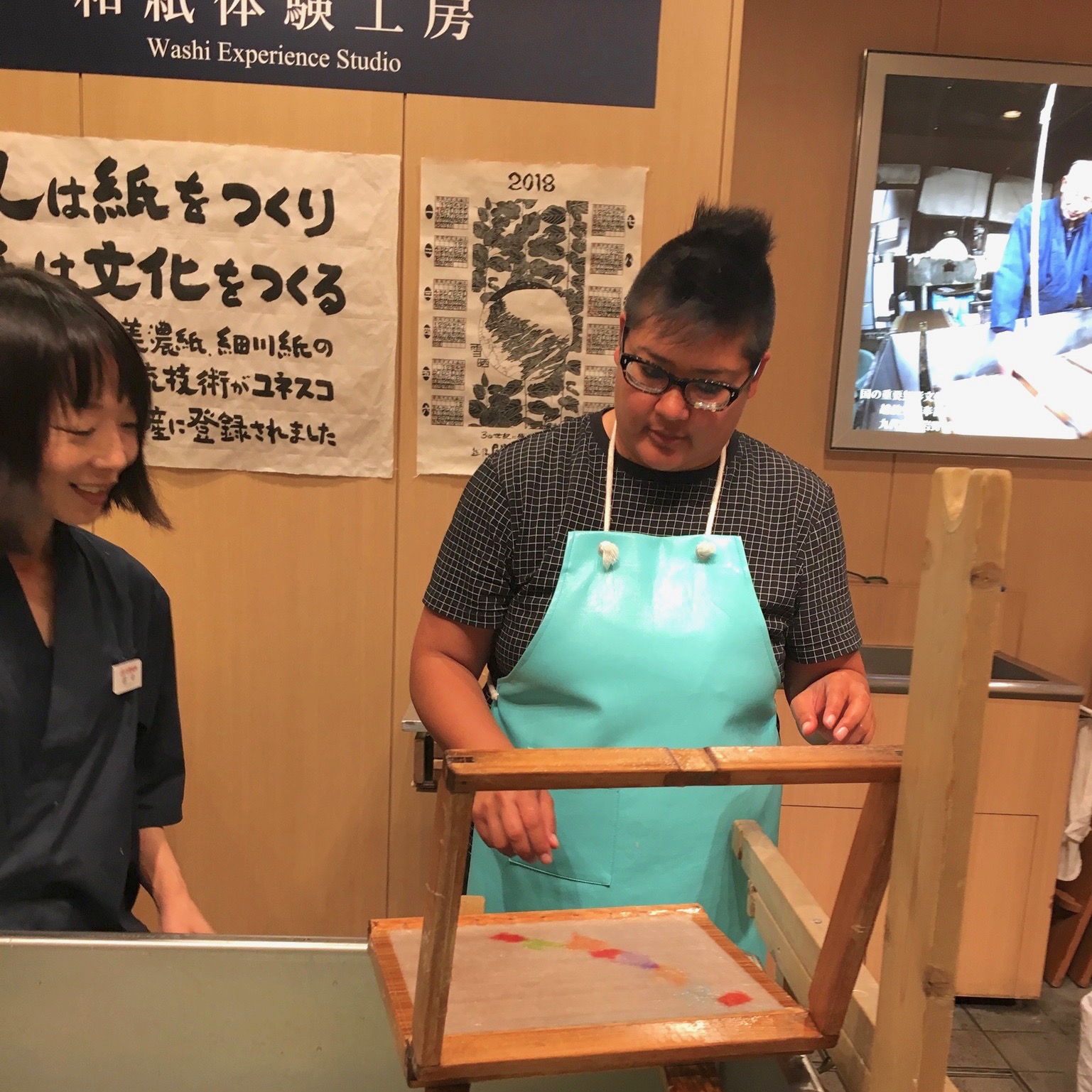
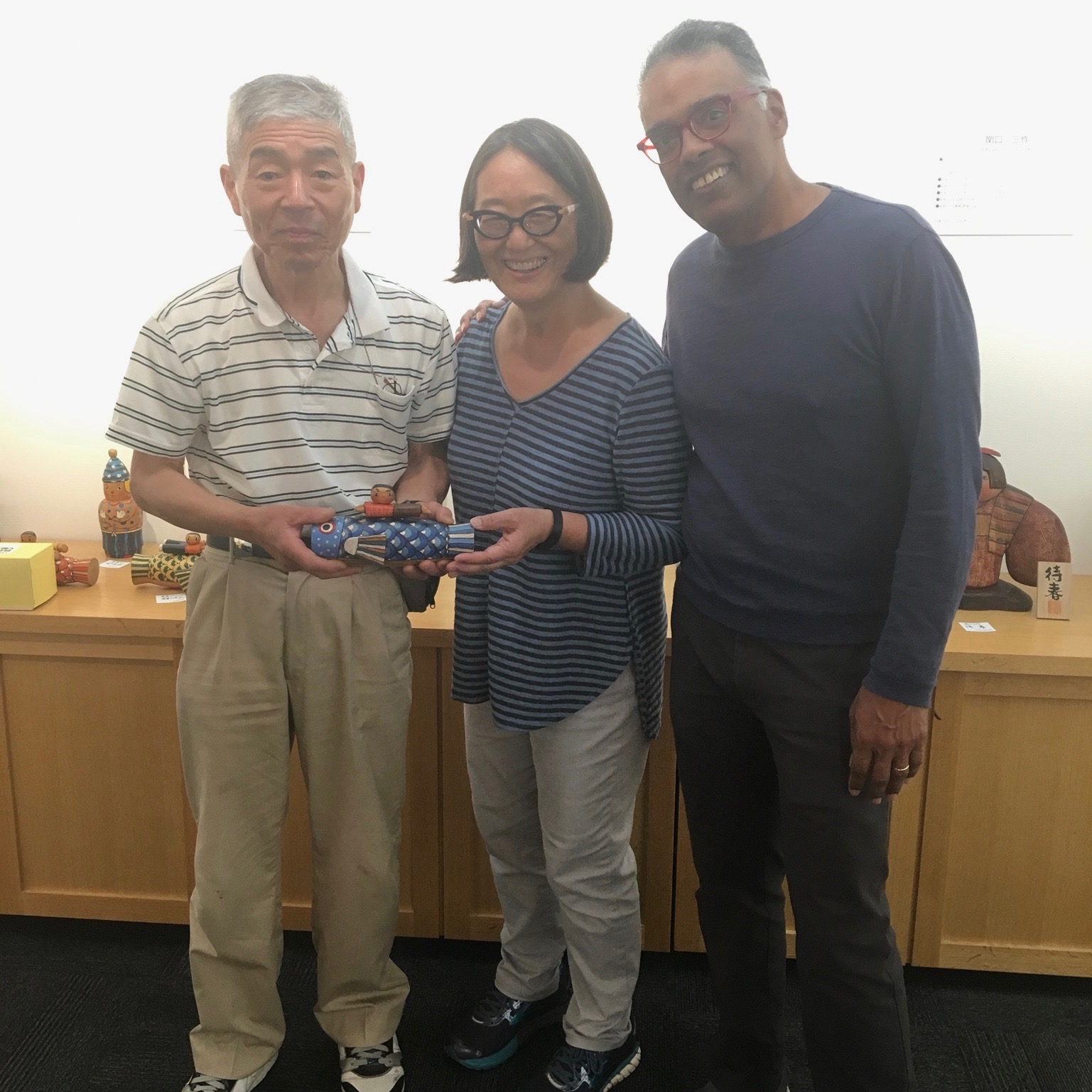
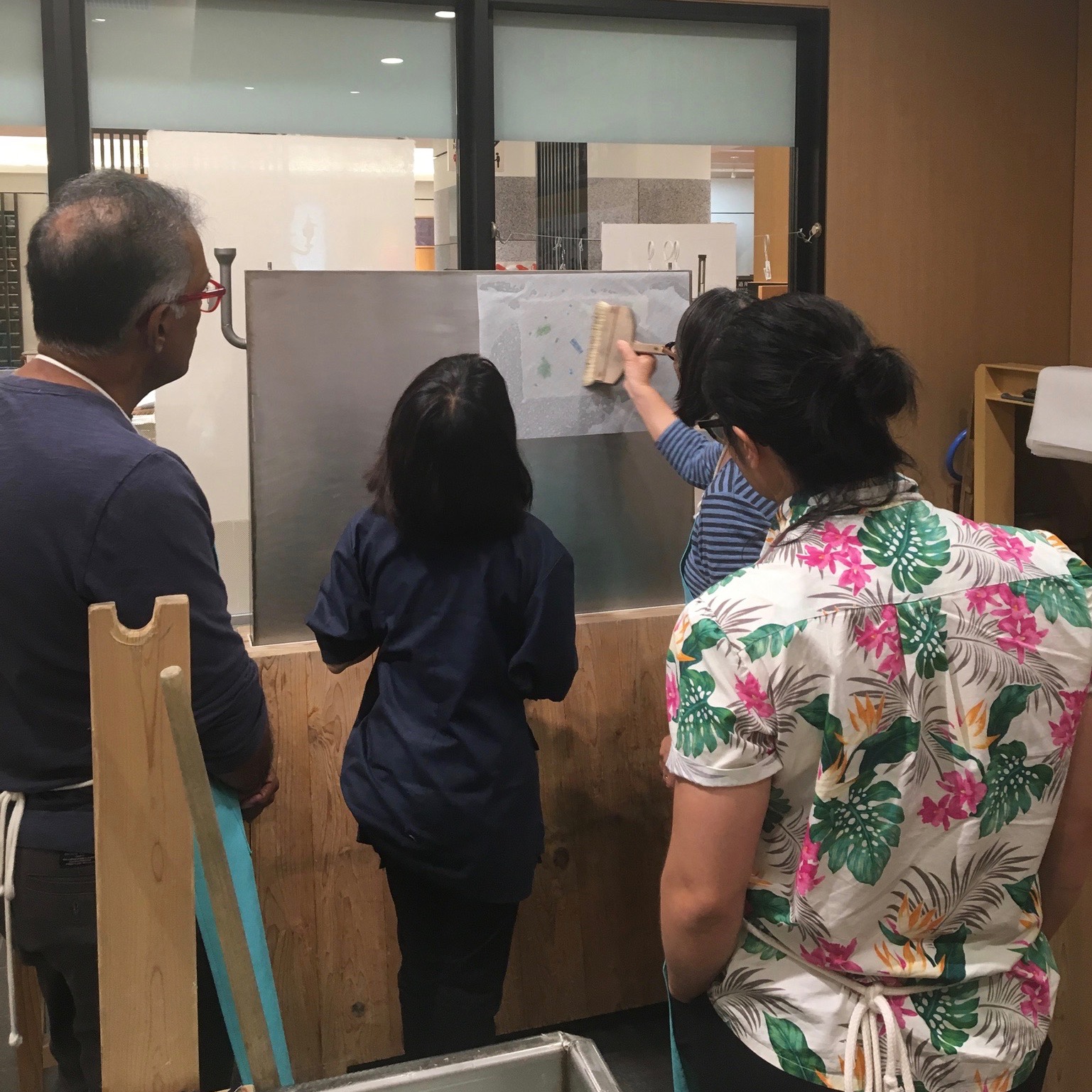
Kamala
It was a wet, humid day outside when we left our tiny suite at Tokyu Ginza to hit up Seijuken, which Mäneka was sure would bring us the freshest, softest dorayaki we’d ever had. This was the breakfast dessert treat of the day.
Dorayaki are the little spongy brown pancakes a with tsubuan between them, which are usually kind of dry and not all that flavorful when you get them packaged in the US. After a brisk walk with our umbrellas, we arrived at a small storefront that smelled of fresh baking and I popped my sweaty head into the shop. My glasses were foggy and there was really just a counter with different size boxes of dorayaki, so Mäneka and I chose a 5-pack and we were on our way.
There was some heated debate, since it was raining, about where it was appropriate for us to taste our goods. It’s generally seen as uncouth to eat while walking in Japan, but you generally can’t just bring your outside food into an eating either. I tried to sit outside of a serious office of some kind, but the other’s didn’t want to shrug off the dirty/confused looks from Japanese people inside. I’m always getting stared at in Japan, so why not enjoy a treat while it goes on?
In the end, Mäneka and I sat inside of the Ozu Washi Shop entry way and sucked down a pancake stack before we went in. They were so soft, springy, and full of great yaki and bean flavor. While we ate, the shop’s resident robot greeter kept coming around and saying “konichiwa,” staring, and then wheeling away, so we felt a little rushed.
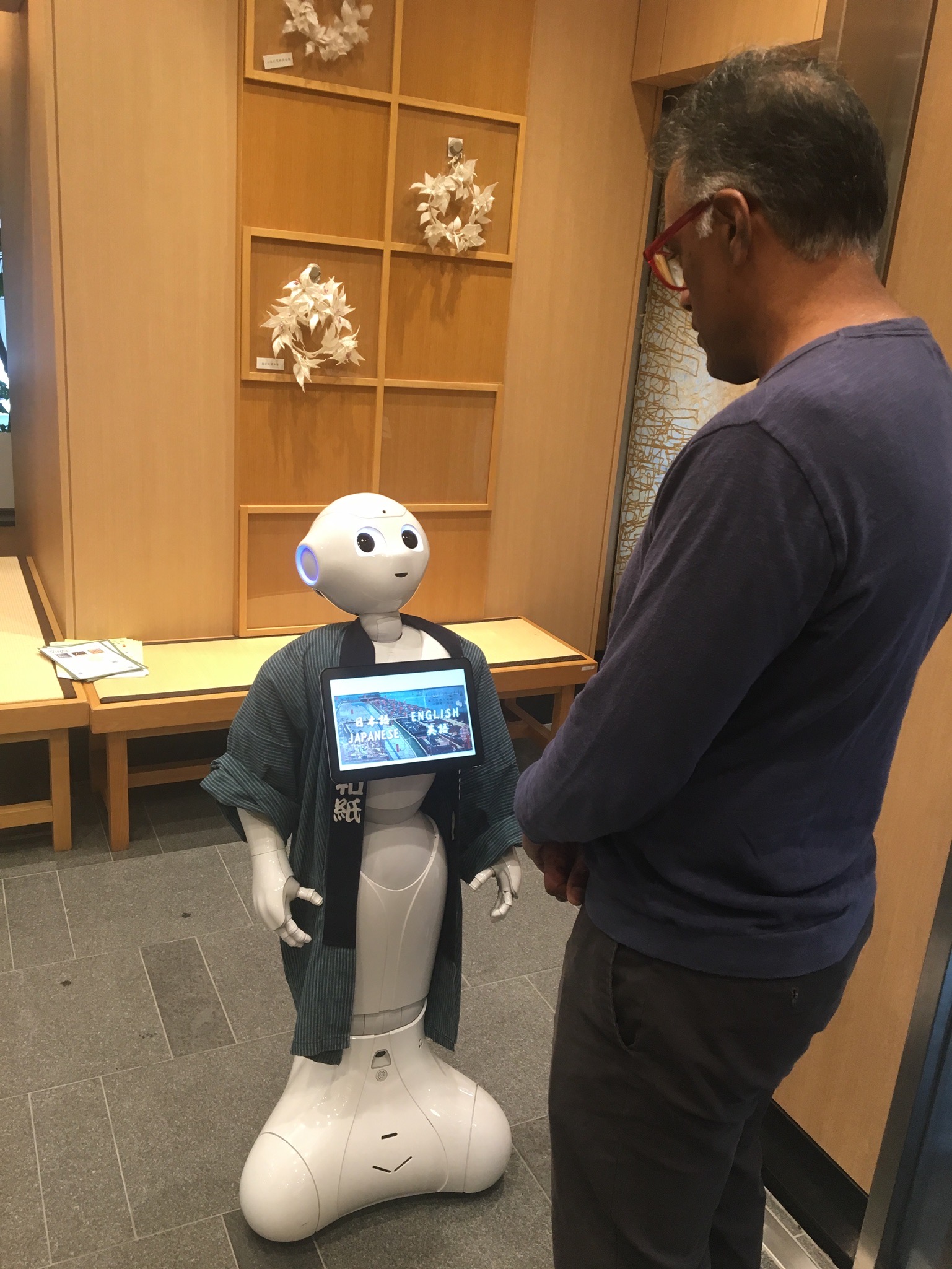
Inside, there was a store on the first floor that sold an array of gorgeous handmade paper and other paper goods. We also went upstairs to look at a painting made on a special, giant piece of washi. The woman at the desk gave us tons of info on the painting in English, including that it was called Four Seasons, and that the artist died before he was able to complete it, so there were still birds and flowers left without their details. This was cool info, and it was impressive to see, but then the woman stood there watching us look at the painting and naming flowers for what felt like an excessive and awkward period of time, and so we went back downstairs.
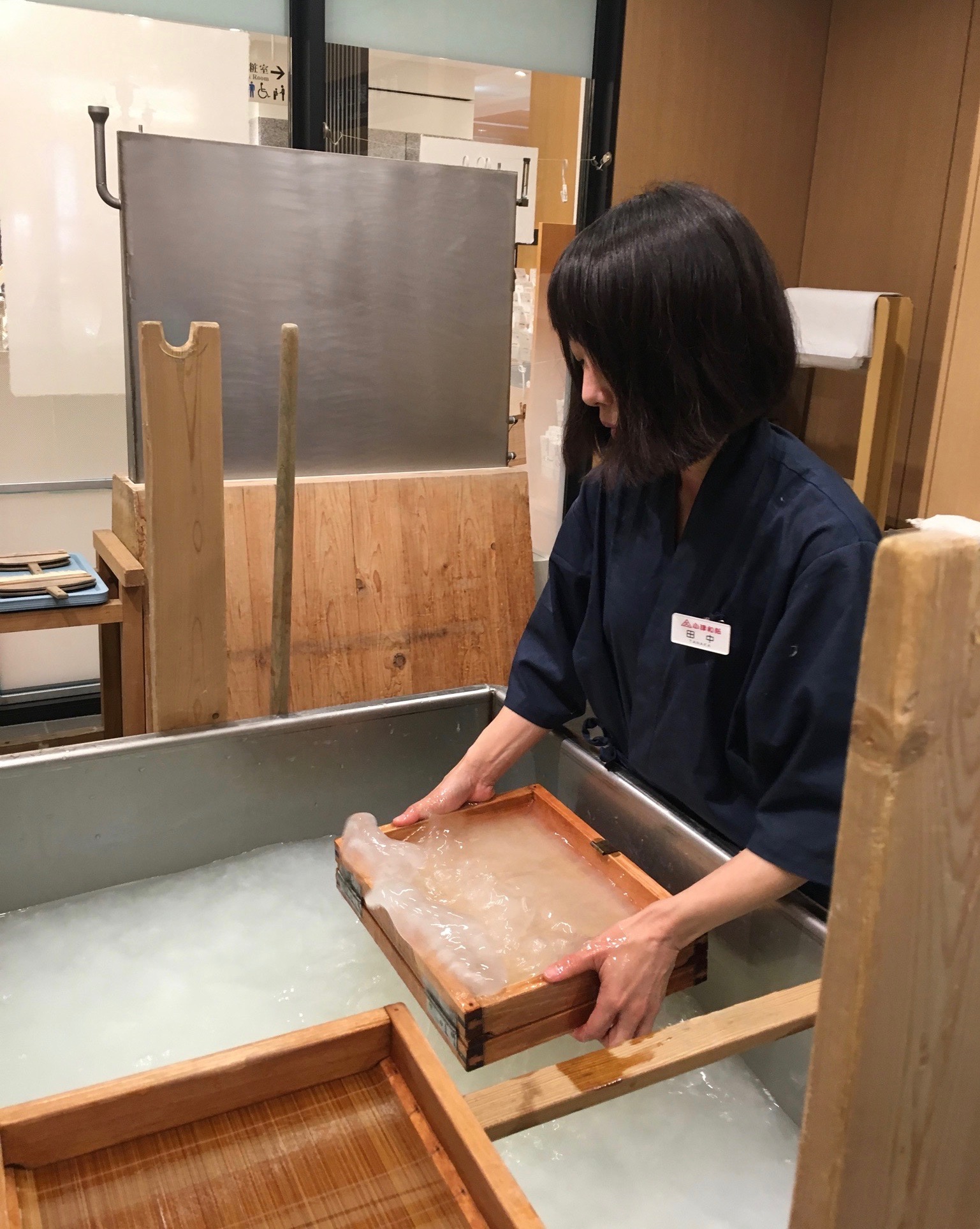
Our paper-making lesson was led by one, Tanaka-san, who was very small, and incredibly good at all the crafty techniques, that were almost like dance moves, required to make washi. We first watched a video about how people in the town of Mino harvest the mulberry branches used to make washi paper, and how they use the fibers from this plant to make the paper so thin, so light in color, so strong, and also breathable. The main take away was that it’s a VERY involved process that requires a lot of water, sun, pounding, and hand rinsing to get the 4% of the plant fibers that are best used for paper.
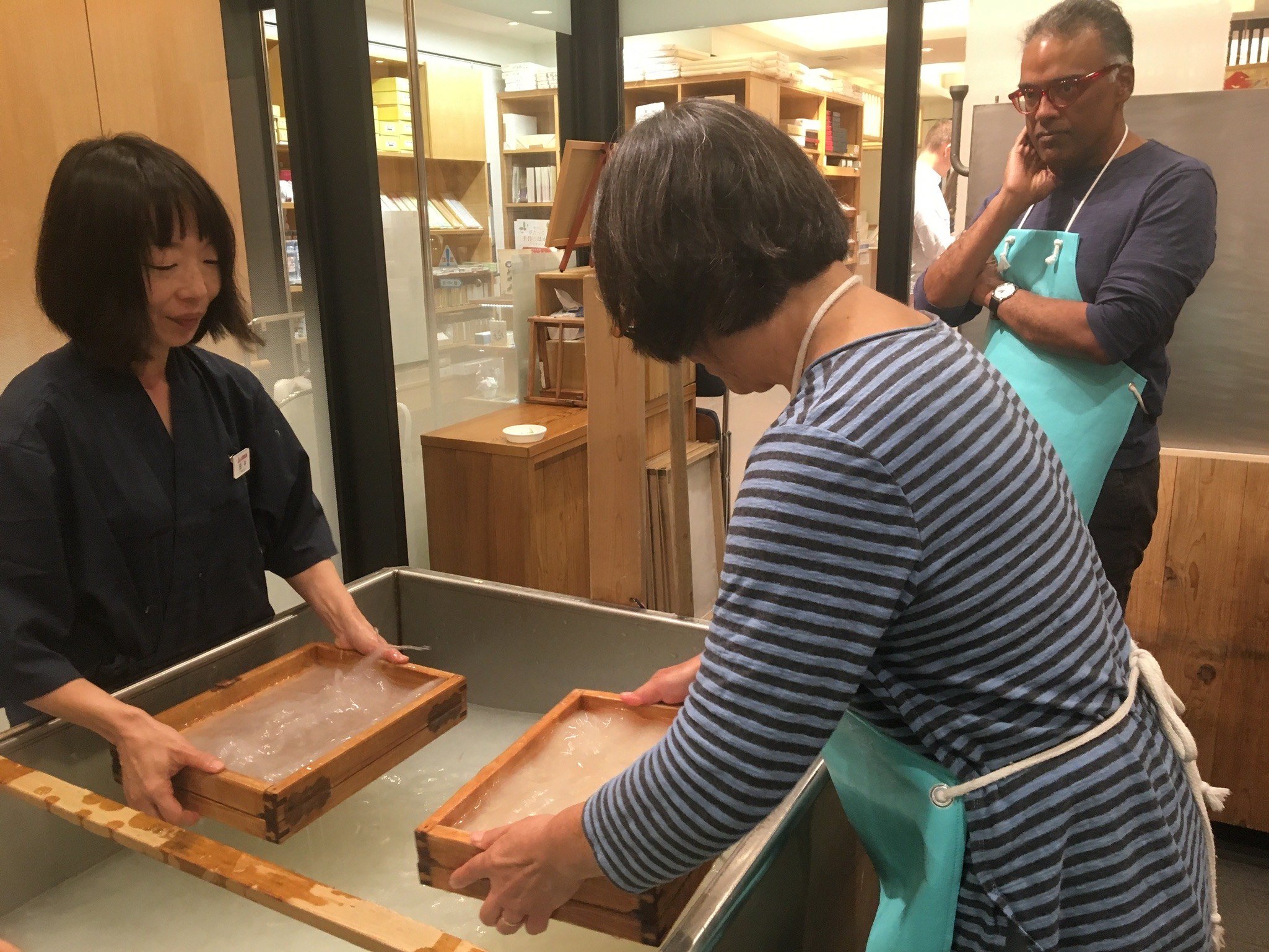
When it was our turn, we sifted through some well-organized decorative paper pieces that we could use to add to our own paper. Then we began the vigorous sifting process where you dunk the frame into a tub of fibers and then shake them around to get a smooth surface on the paper. Tanaka showed us the delicate dump move you had to pull off in order to get the excess water off the screen, but not dislodge the edges of your paper layer. None of us were was good at this as her.
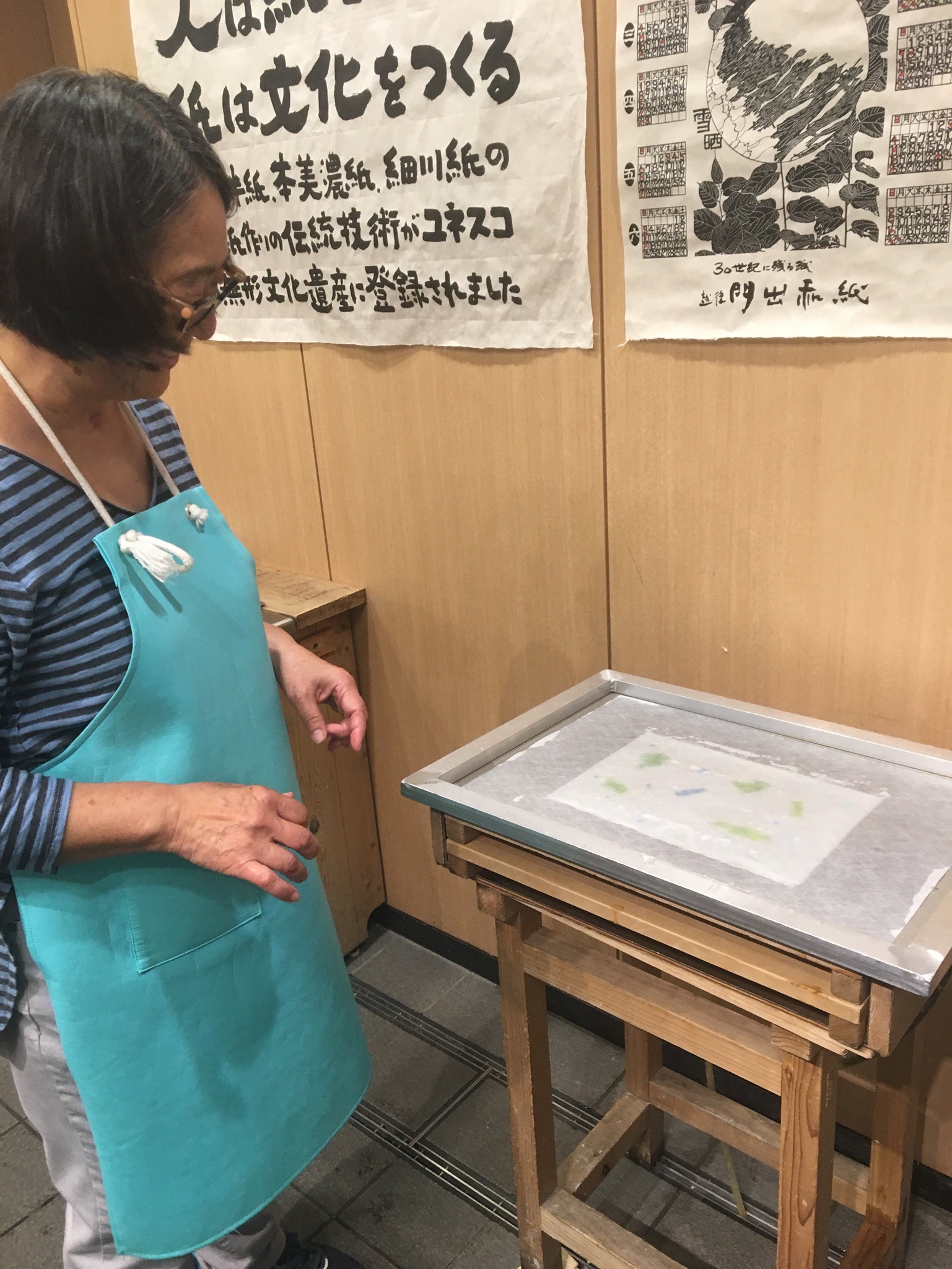
After we made our paper we all picked out the items we wanted to buy in the store. I found a piece of Japanese marbles paper in peach, pink, turquoise and purple, and mom picked put pocked piece of washi with a black swirl that she wanted to hang on her door. While we were shopping, suddenly a very tall woman in a pea green suit burst into the store, dropped her enormous, rectangular bags in front of the register and started loudly jabbering away about something — we’re nubes and so could not tell what her deal was. Throughout our process of paying, she interrupted several times, squawking about one thing or another and dragging the polite register man away to unroll one or another item, and then knocking things over while exclaiming, “omoshiroi” over and over again. She’s by far the loudest and largest Japanese woman I’ve yet to see.
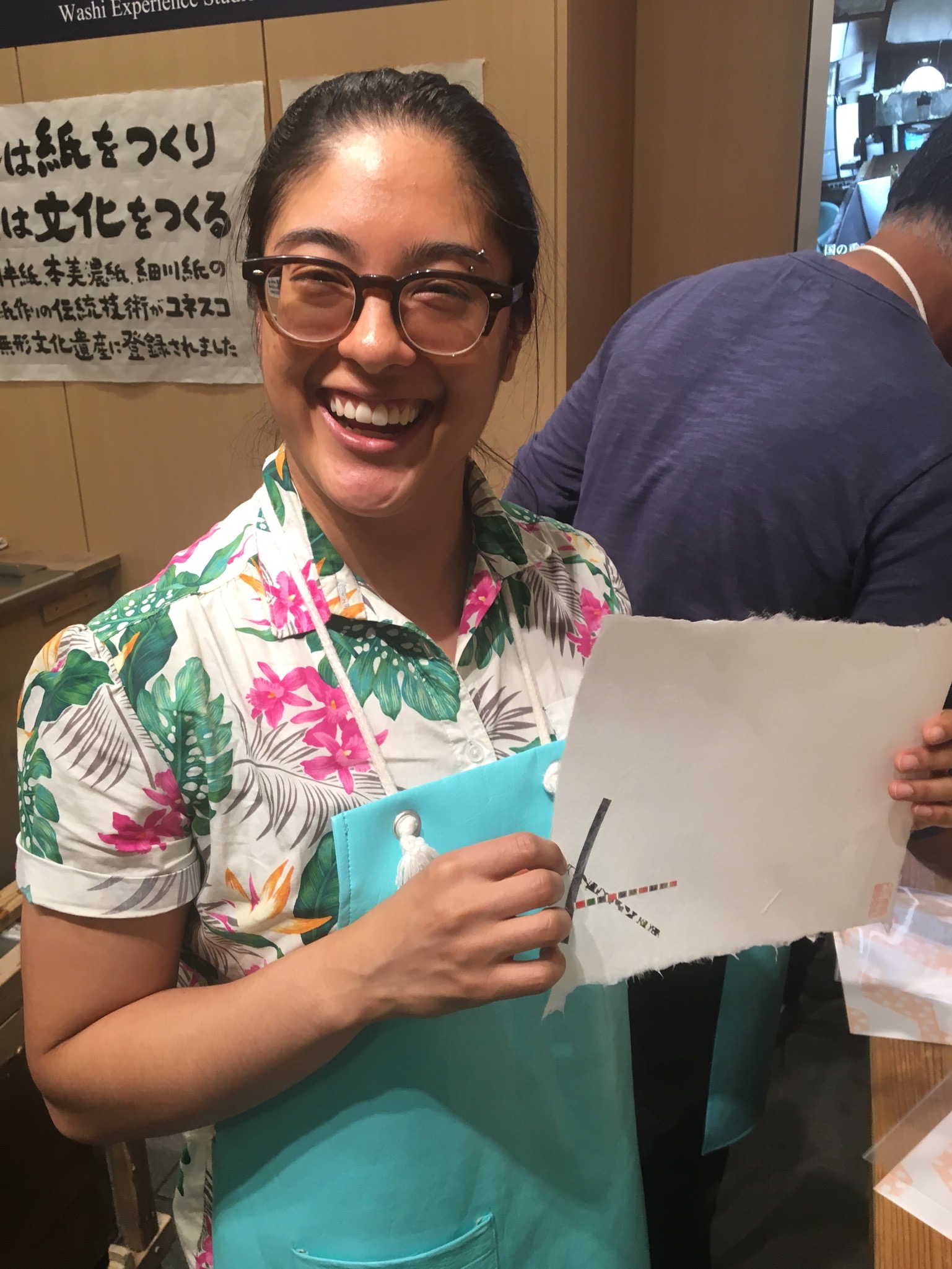
Balaram
Monday is moving day. Linda and Mäneka helped set up a takyubin move of our luggage to an AirBNB in Shibuya. On Sunday night we picked out some clothes and toiletries to carry with us while our bags were carried by the service to our new location.
Once the bags were taken by the hotel staff, we headed out in the rain to a shop specializing in dorayaki, a pancake-like delight filled with bean paste (tsubuan) called Seijuken in the Shimbashi district. This was conveniently close to our paper making (washi) class at a paper making company called Ozu in a nice building that had been on the site since 1653! The store contains an abundance of beautiful paper of different types, sizes and patterns. A pleasure to roam around before and after our class. The second floor was hosting an exhibit of kokeshi dolls by several local artists. These were very interesting and a variety of styles were displayed. We decided to purchase a small Boys Day type of fish sculpture as a souvenir and got to meet the artist who was present and very grateful for our purchase of his work. The transaction was aided by a woman who spoke English and allowed us to communicate briefly with the artist and to take a photo with him.
We “wrapped up” the time there by purchasing several items that needed proper packaging to protect the paper from the rain. Our cashier, however, was frequently interrupted by a very large and pushy woman who kept badgering him with questions and knocking down items from the shelves. Otherwise, the time at Ozu was very enjoyable thanks to Mäneka’s efforts in settling it up.
After the washi class we had an unagi lunch in the basement of the Mitsukoshi department store. The basements of these stores typically have numerous counters of fresh and prepared foods of all types and just walking around is a dazzling experience for the senses. Pastries, breads, chocolates, meats, Japanese sweets, crackers/nuts, amazing fruits etc. They also have restaurants and Linda has wanted to try an unagi place and we found one here for lunch. The only decision was about how many pieces one wanted to eat. Unagi in the US can be too sweet but this was light and tasty and complemented by the wonderful Japanese pickles, tsukemono, that were provided. After lunch, we all purchased items to bring to our AirBNB in Shibuya.
The apartment is in a nice neighborhood near Yoyogi Park and close to the main shopping areas in Shibuya which have all the upscale international stores as well local ones. While small, the unit is suitable though we caused the futon bed to collapse soon after we arrived. We quickly found out that it was not really comfortable either as a bed or a couch so we have been using it as a place for suitcases and Mäneka sleeps on bedding on the floor. The air conditioning works well, as does the refrigerator. No microwave, however. We look across into a cafe that rarely has more than 2 people, at least while we are in the apartment, and we wonder how they can pay what must be pretty steep rent in this area.
We ended the day having dinner at a nice sukiyaki place in the neighborhood. Very stylish with individual pots to cook our food. Very nice beef, pork and vegetables. Lots of foreigners, especially Chonguo ren, some rude, were present. The staff, however, were accommodating of all of us.
Mäneka
Seijuken was the first of the stops that I had seen on Kantaro: The Sweet Tooth Salaryman. Unlike the other shops we visited, this one in only mentioned in passing and Kantaro does not visit it. Upon finding the place, I realized that this might be because there is absolutely no seating and the shop area accommodates a single file line so if Kantaro had visited it he’d have to have a standing sweets-gasm in close proximity to another patron. Not ideal.
Their dorayaki are unlike what you find the United States. They were freshly baked and stuffed with handmade an, the laboriousness of which limits their production capacity so they frequently sell out early in the day. I was thrilled to get some. The shop looked to have a few different varieties that appeared to mostly differ by the volume of an they contained. The castella pancakes had a pleasant bit of chew and were redolent of honey, which nicely harmonized with the beans.
The other sweet highlight of the day were the two macarons from Pierre Herme that I purchased at Mitsukoshi. We got the classic raspberry/lychee/rose as well as the matcha/red bean/white chocolate that is a Japan exclusive.
